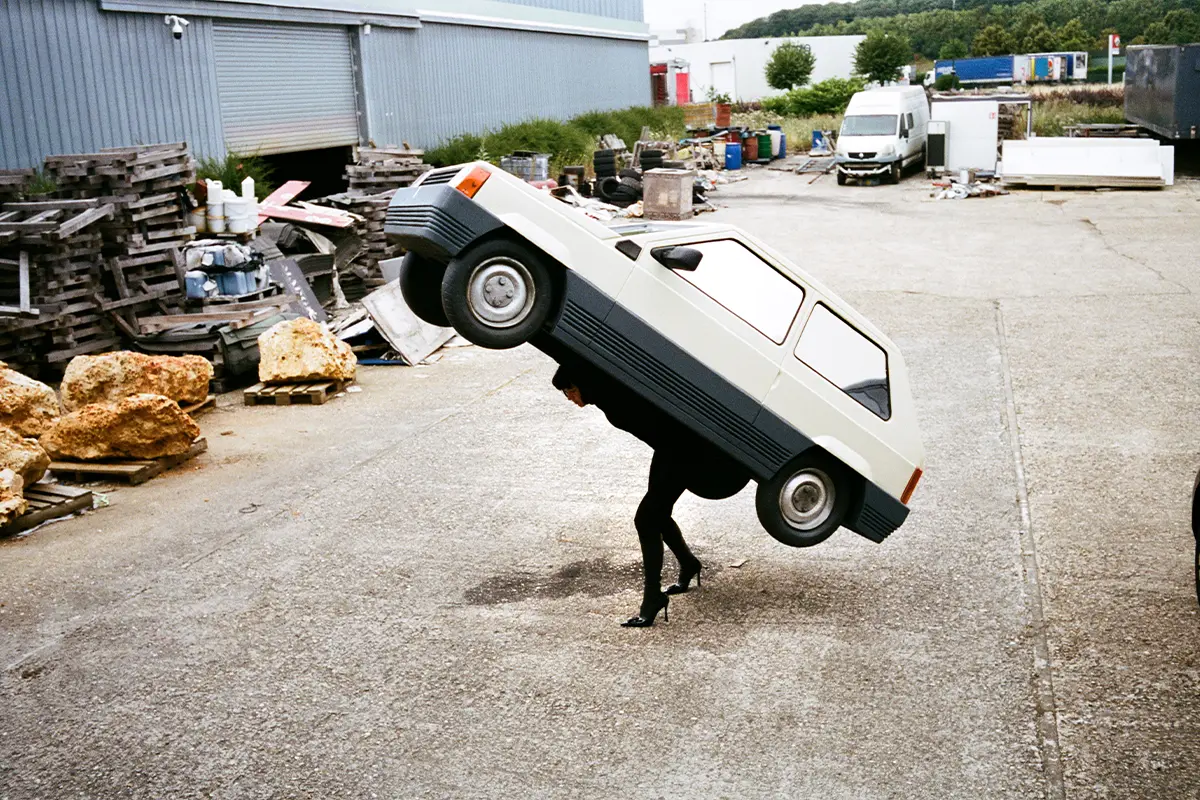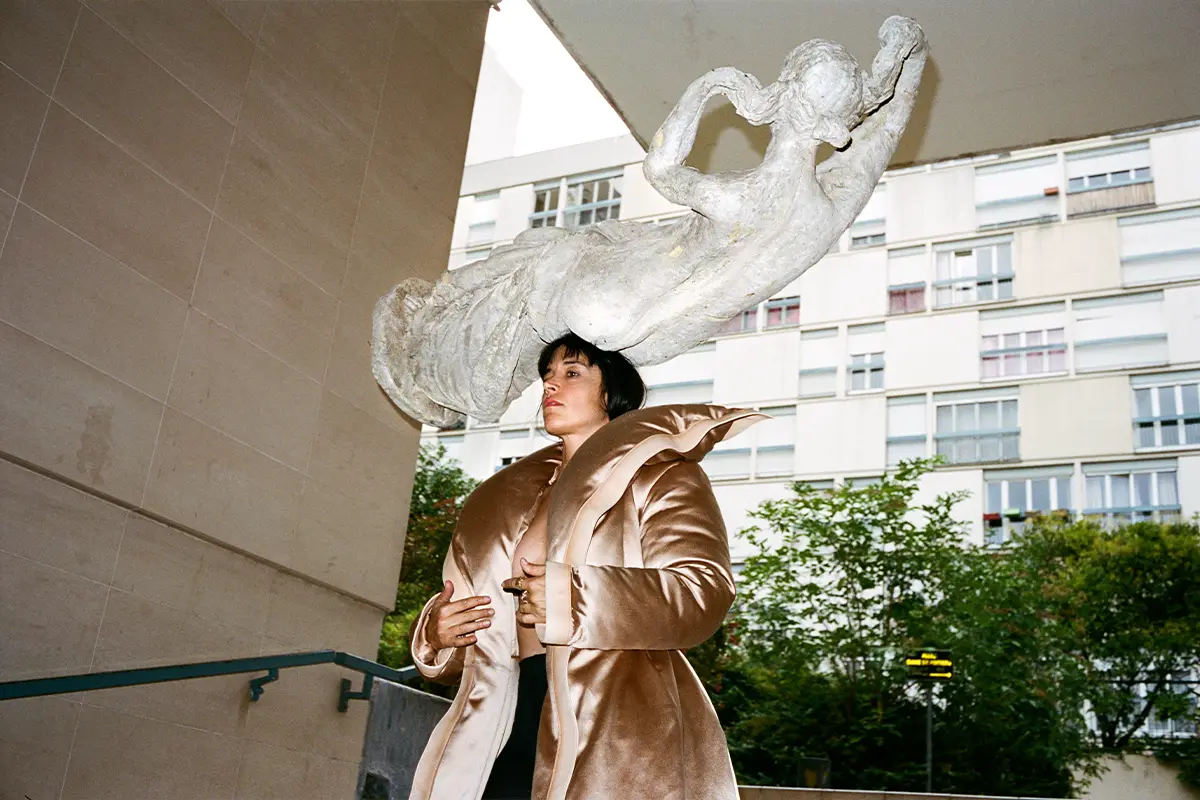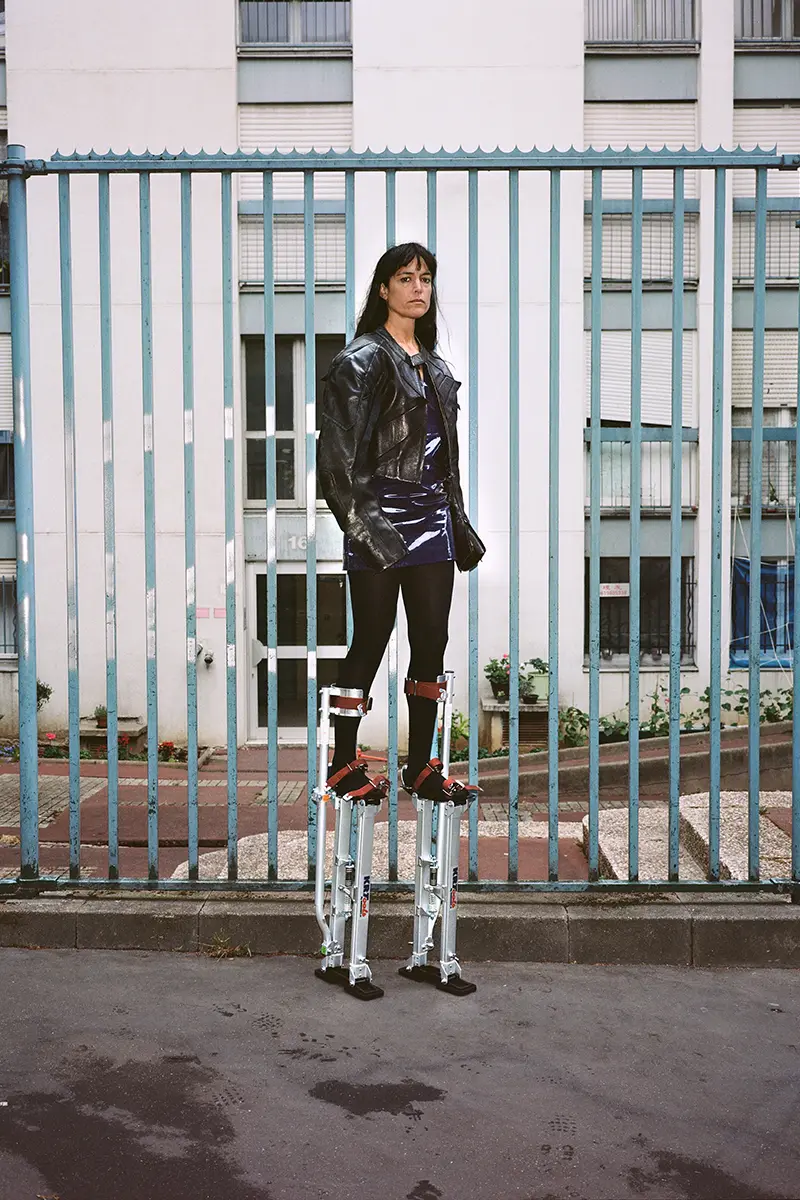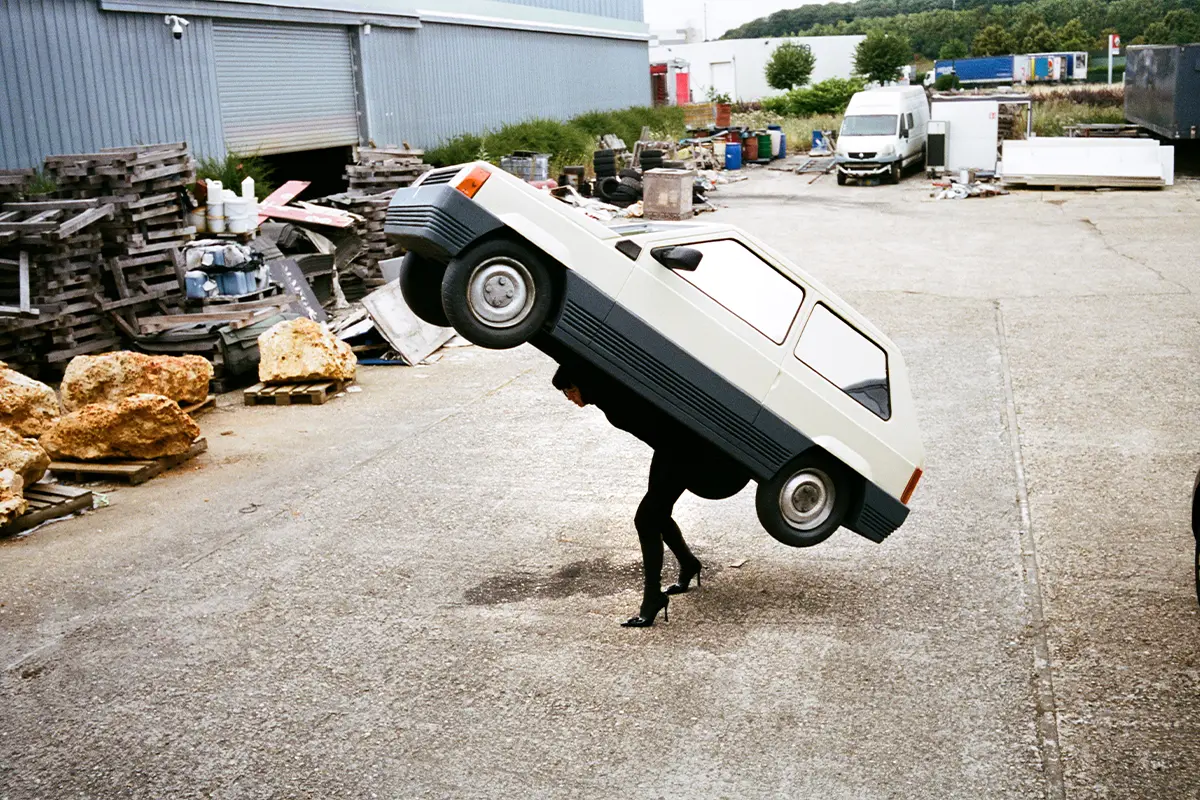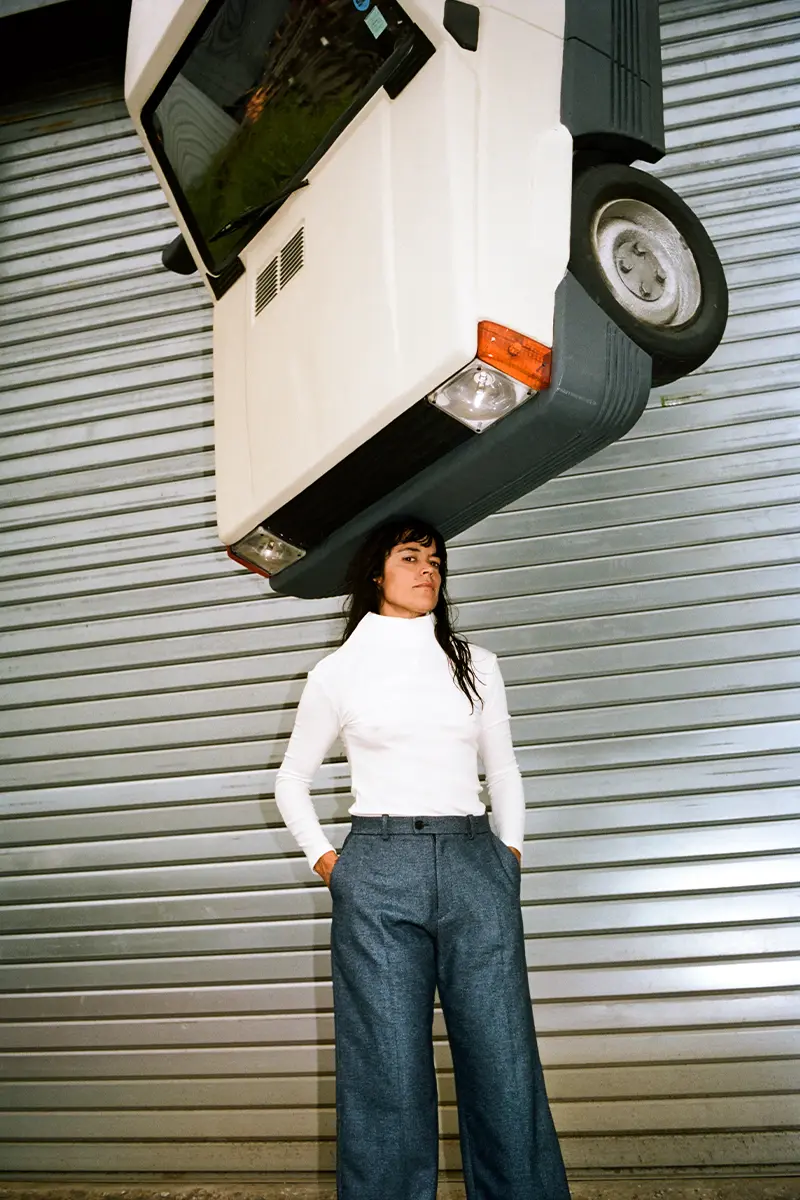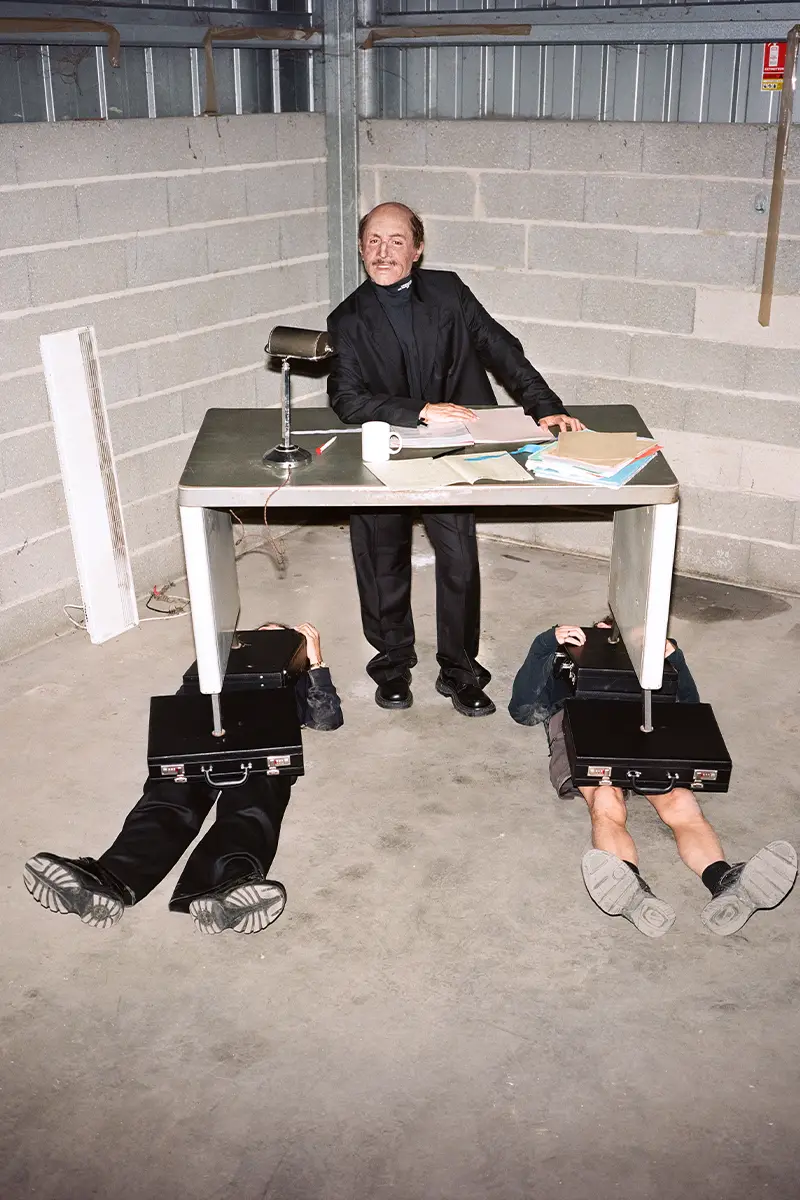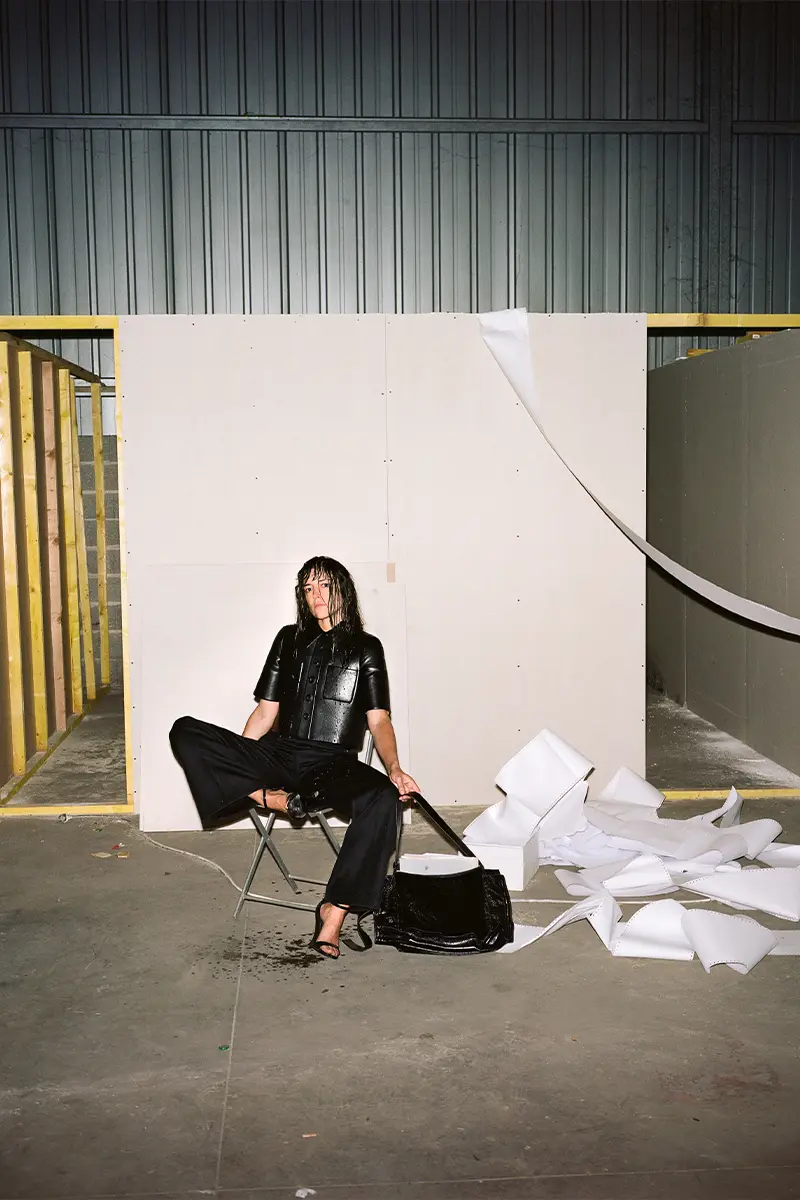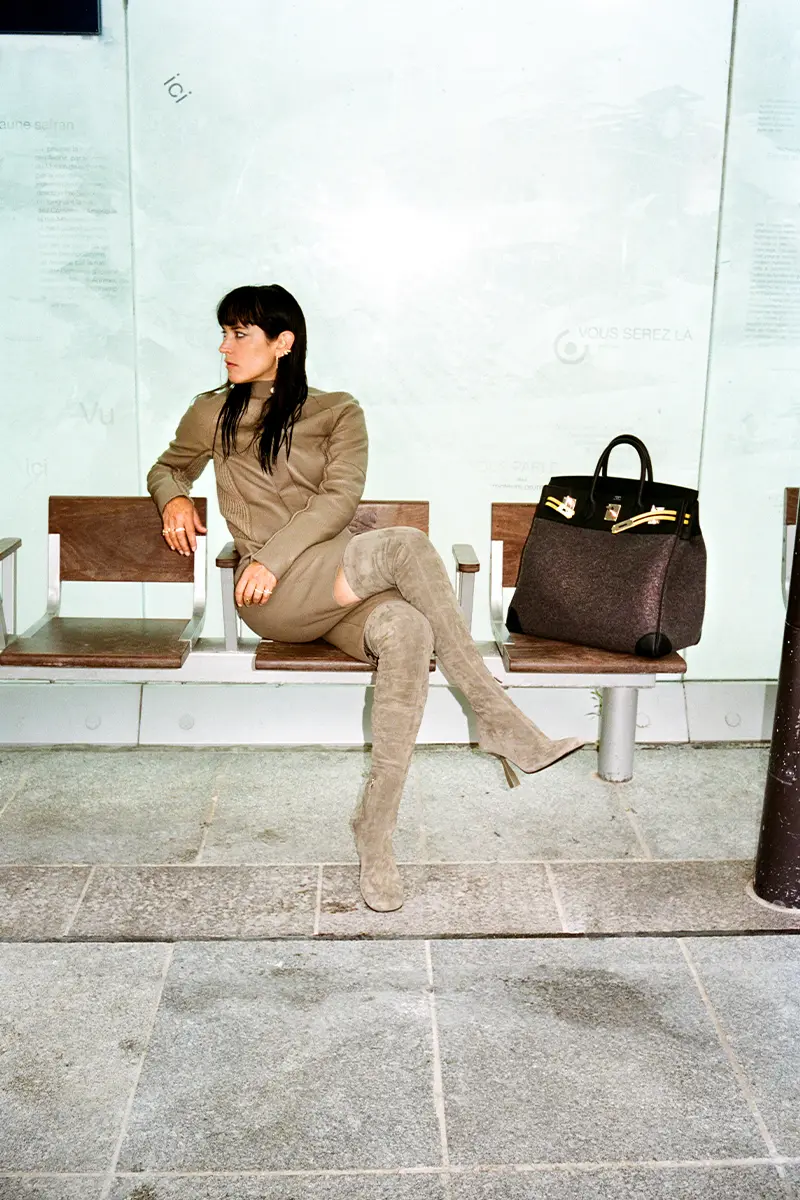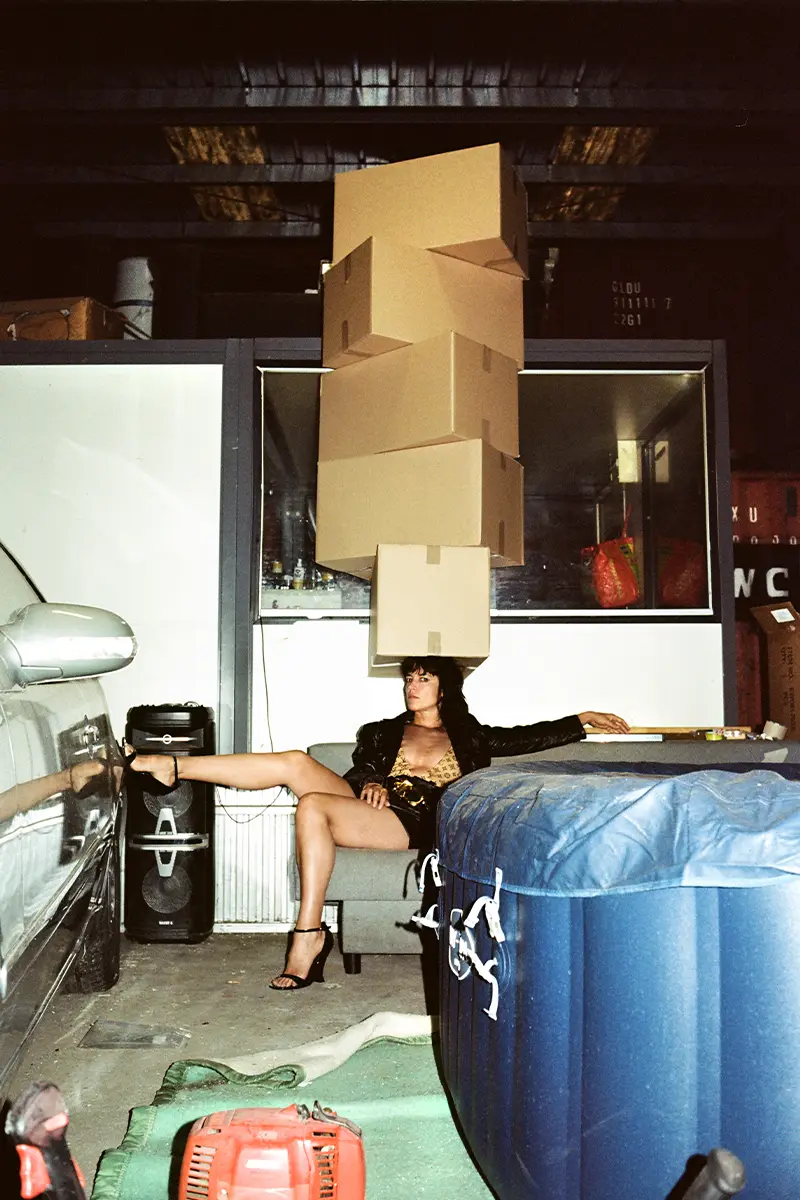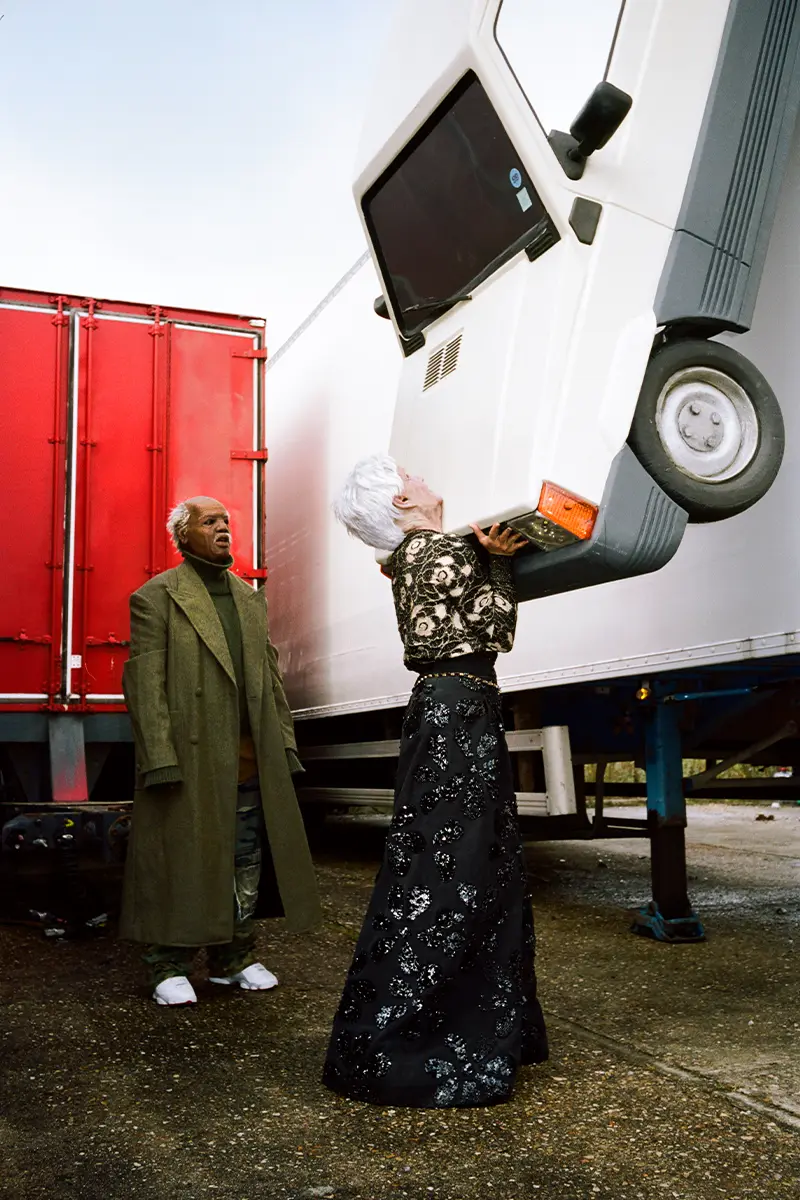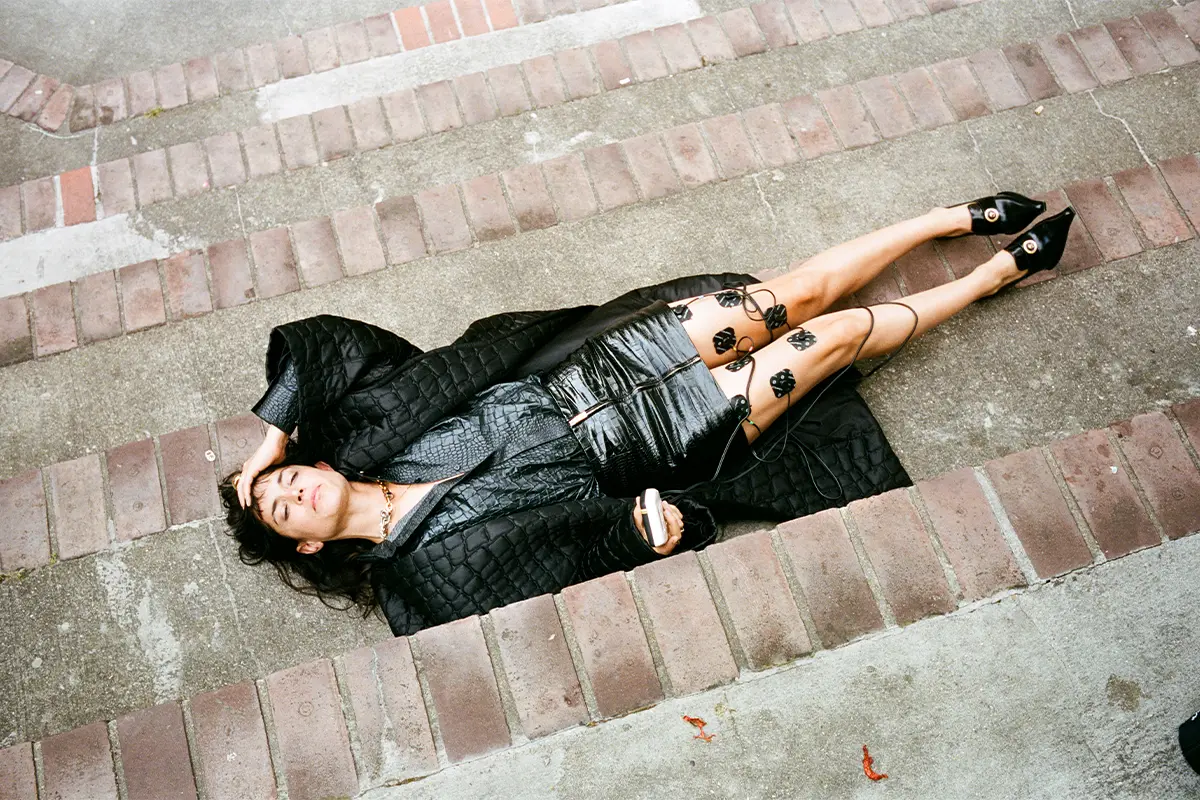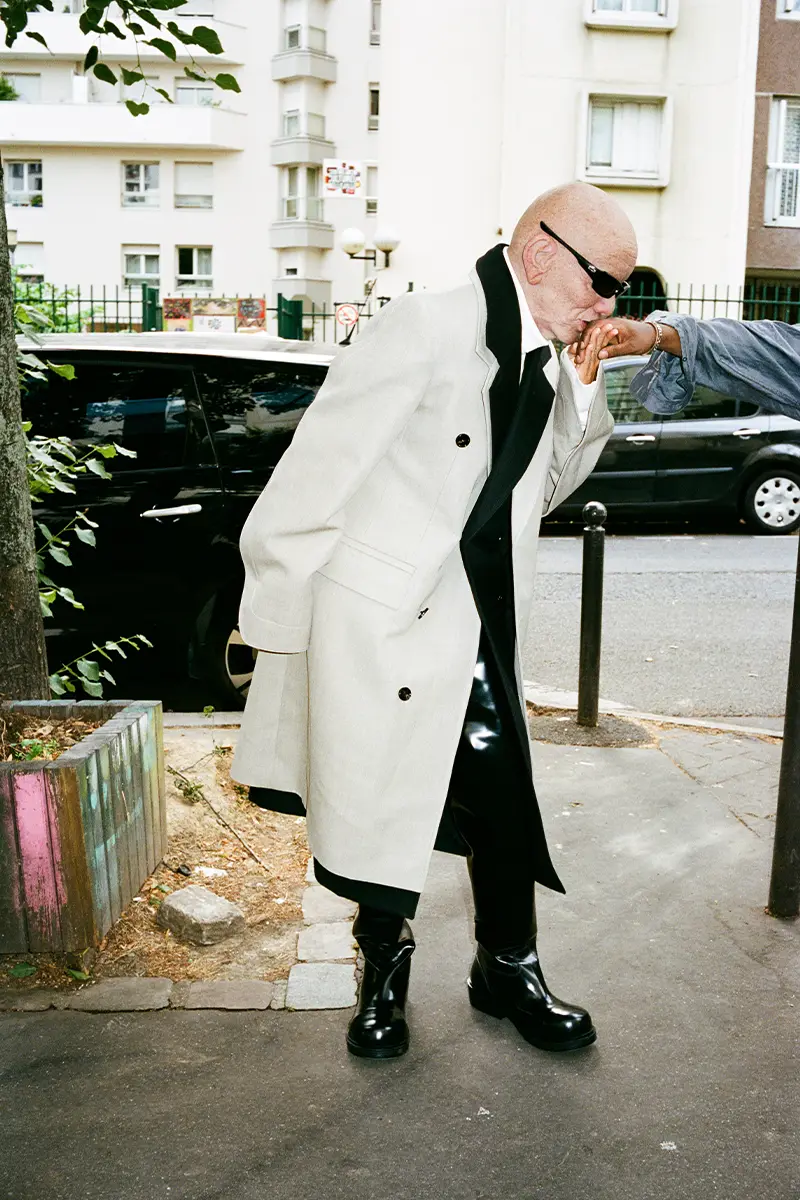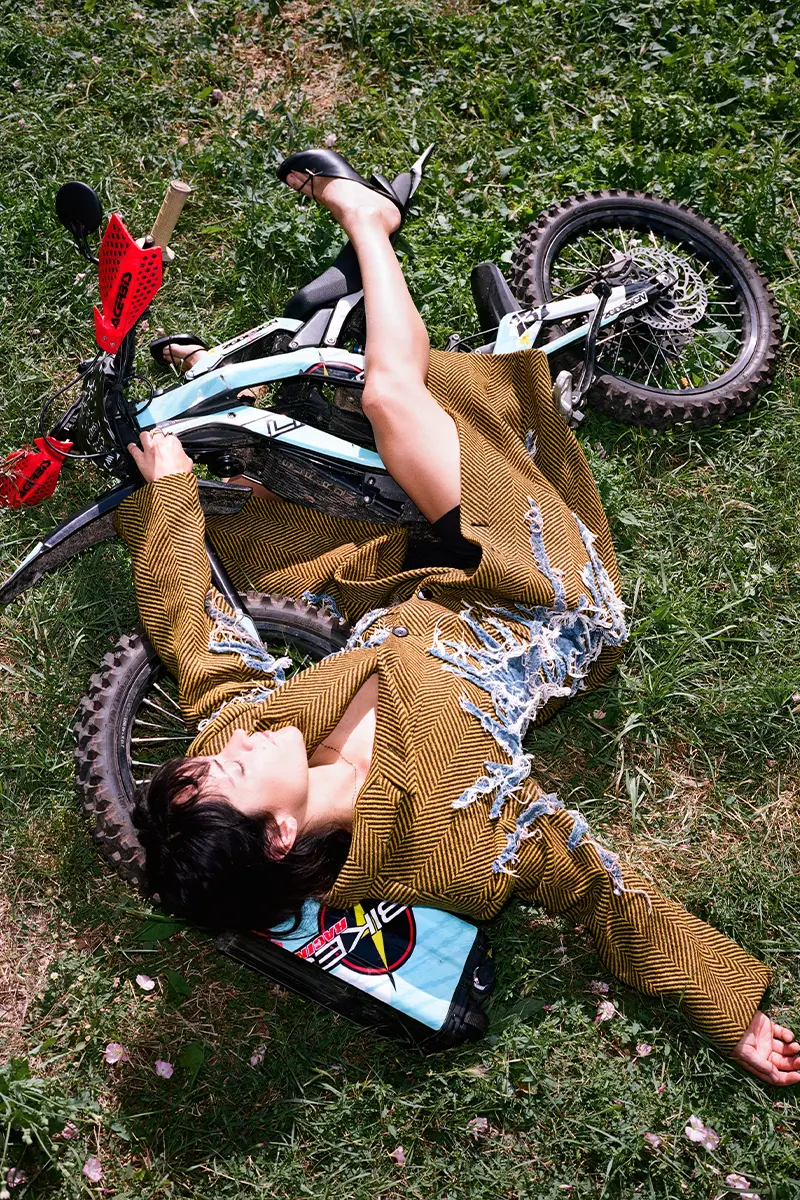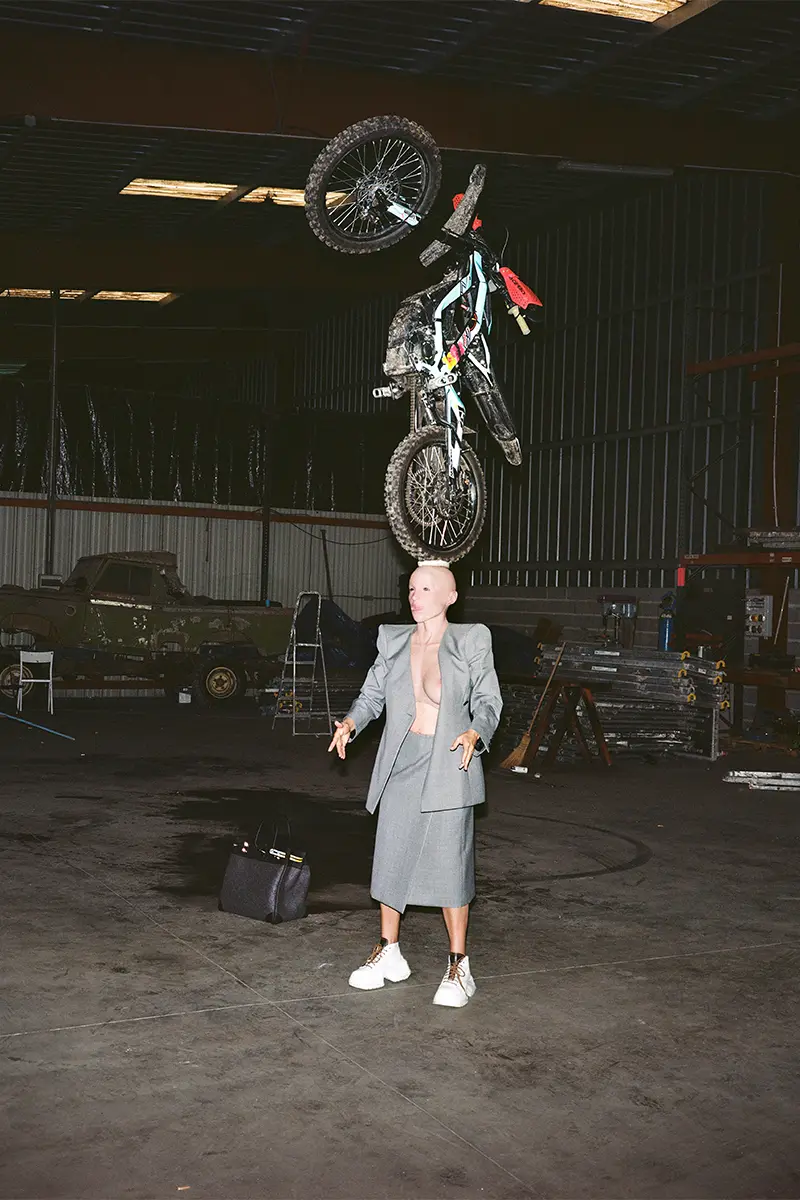Toying with the uncanny and the bizarre photography, Vimala Pons’ editorial with Maxime Ballesteros is a visual rollercoaster, of alter-egos, doppelgängers and vocational doubles
What is uncanny photography? Meaning and definition – working with Maxime Ballesteros
An introduction by the editorial team
Uncanny means mysterious. A sensation arousing superstitious fear or dread; uncomfortably strange. The uncanny valley is a hypothesis presented by Japanese robotics scholar Masahiro Mori in 1970, published in the journal Energy. The research experimentally analyzes how the sensation of familiarity and pleasantness experienced by a sample of people and generated by anthropomorphic robots and automata can increase as their resemblance to the human figure increases, to a point where extreme representational realism produces, however, a sharp decline in positive emotional reactions due to non-concrete realism, arousing unpleasant feelings such as repulsion and disquiet comparable to perturbation.
Examples can be found in robotics, digital animation, realistic dolls. As well as the growing popularity of virtual reality, augmented reality, and photorealistic animation.
Maxime Ballesteros’ photography taps into the wake of this feeling, creating a theater of ironic and disturbing puppets that leave the viewer bewildered.
Ethics and aesthetics – Maxime Ballesteros’s uncanny photography questions the monstrosity of contemporary labor
Text by Dorrell Merritt
The act of working shapes our lives unequivocally. It is the foundation of our realities; our dreams, anxieties, hopes, progress and often too, our struggles. Regardless of what we labor in— what we earn, what we learn and yearn for, how we invest our time through labor. Physically, mentally, or both, sculpts our experience and understanding of the world.
The creative meeting point between Vimala Pons and Maxime Ballesteros, was a visual, surreal and kinetic musing on just this. Exploring, ultimately, the place in which working sculpts with our dreams, our fantasies, frustrations, banalities, ambitions, and the resulting absurdity of escape, ever-lurking in the corners of our minds. On the border between ethics and aesthetics, Maxime Ballesteros’s uncanny photography questions the monstrosity of contemporary labor.
Vimana Pons in the photography of Maxime Ballesteros: rules are subverted, rigid norms and discarded
Within the images, we witness the unthinkable, the unbelievable and the undeniable. The poised, the pensive and the peculiar, all through the trademarks of Ballesteros’ trademark gritty-ethereal aesthetic and Pons’ performative balances. Manifestations of her balancing and circus practice. Known rules are subverted, rigid norms and discarded and when all is said and done, it is the artists here, who reclaim a certain freedom in shaping their temporary world, on their terms, by way of working. Speaking with Vimala Pons, known for her prolific acting career, experimental music concept, Eusapia Klane, and Instagram feed full of evidence of her balancing the most ingenious arrangements atop her head, we delve into her relationship with working.
Vimala Pons and the EP Eusapia Klane – combining narrative and music, ethics and aesthetics, within an experimental format
DORRELL MERRITT
I have seen you self-describe as an Author, Circus Artist and Actress. Of course, too, there is your conceptual EP, Eusapia Klane, combining both narrative and music, ethics and aesthetics, within an experimental, alluring format. What was the starting point for this musical path?
VIMALA PONS
I do not consider myself a musician, as I create just for my performance shows, but I would say that maybe the one thing that can be a common point between all of that is writing. When I was little, I always wanted to be a writer (like Agatha Christie). Also, my mother was a musician. She was a guitar player and a drum player, and so she tried to put me behind instruments, very early.
The EP ‘Eusapia Klane’ (Warriorecords)
In terms of writing, I always use music as a starting point for writing my shows. I write them first with audio: all the soundscapes, all the text, the way the text is interwoven with the music, and the spatialization of the sound. The EP ‘Eusapia Klane’ (Warriorecords), I wrote during the first Lockdown, by way of some of my inspirations, David Byrne, Rebekka Warrior and TNGHT. I was in the set construction workshop and we had to leave and leave the whole set half finished.
At the time, we were building a full-scale car out of polystyrene on the model of a Fiat Panda (the one I’m wearing on my head in the editorial). But, it didn’t work, it was too heavy, too unbalanced. So I wrote a track based on the idea of someone who can’t get out of his town, which was the basis for all the music in the show. At the end of the song, the character of Eusapia said: ‘I pay too much attention to the vehicle and not enough to the destination. I’ll never go anywhere in my life but it’s already a journey to know that.’
Vimala Pons and the this vertigo of identity – ethics and aesthetics on Maxime Ballesteros’ photography
DORRELL MERRITT
Can you pinpoint the moment in your life when acting, or rather, performance, revealed itself to be a viable medium to work within?
VIMALA PONS
I actually never wanted to be an actor. It’s a classical answer for an actor, but I came to this because I wanted to write scripts. At some point, I discovered how deep and genuine this craft can be, and that it is an inspiration for me when I write shows. Even with the shoot with Maxime, with the different faces; and the different characters, there is this ‘vertigo’ of identity. In Hebrew, the word face is called ‘Panim’— it’s a word with no singular. In the Hebrew state of mind, we’re not required to have just one face.
We are double, we are triple; all my different ways of writing and creating are just like different faces. If acting is something that’s really essential for me, it’s because it is both a subject in my life and a craft. It’s like a vicious cycle, between the craft and the subject, and there too is ‘lying’— the idea that ‘lying’ is also like a kind of rebalancing reality. The power of fabrication, to give ourselves the tools to rewrite things as we see, is the craft of the actor. The power of storytelling. I feel like this ‘lying’ is an emotional crossroads in a way, which is interesting.
Vimala Pons editorial for Lampoon. Photography Maxime Ballesteros
DORRELL MERRITT
Your editorial with Maxime Ballesteros works with humor, uncanny, scale and likeness, and of course, the balancing of objects performatively, which you’ve become known for on social media. The atmosphere of his work catapults the viewer to the border between the dream and the nightmare, placing a lot of emphasis on the thin line that divides the opposites and antagonisms that govern us. What was the experience like, coming from an acting background?
VIMALA PONS
Actually, it was really incredible because it was the first time I did a fashion shoot. I was quite lost at some point because all the objects in the shoot were my objects. Intimate objects that I know, and that I have built, but the clothes were not mine, and were so expensive! Acting is really different to moving images. No stories, like in cinema where you have eight different stories; different women, different men and such. There is an astronaut, David Wolf, who when coming back from the moon, said that when you return, your senses are heightened because they’ve been absent for many months. You feel the weight of your watch, you feel the weight of the tears when you cry. So I would say that working with Maxime was an experience like this. My senses were heightened.
The image of the dirt bike balanced on my head, perhaps represents me the most, right now, while the image of me in the swimming pool perhaps is the closest one to representing my hope for my future. I love the idea of stopping carrying everything, on my head or my shoulders. It is time to let go and to float.
French genre cinema is expanding – Vimala Pons: ‘work’, ‘love’ and Maxime Ballesteros are all linked
DORRELL MERRITT
Love and work are the cornerstones of our Humanness, said Sigmund Freud. What are your relationships with both love and work?
VIMALA PONS
I would say that for me, trying to love someone, is trying to protect them from yourself. The more you know yourself, the more you can love someone, and the less you can hurt them. Regarding the shoot, I originally met Maxime through a musician. He is the love of my life, and who is also one of Maxime’s best friends. It was like the Fashion Week in Paris, and we were in a private hotel. Immediately he took pictures of us, at the beginning of our love story. Those pictures are really precious to me because he captured the real beginning of our love. So for me, ‘work’, ‘love’ and Maxime are all linked.
Vimala Pons on ethics and aesthetics: this narrative device deploys a kaleidoscopic range of emotions
DORRELL MERRITT
Your impending movie release for 2023, ‘Vincent Doit Mourir’ (Vincent Must Die) has been praised for both its deadpan and absurdist humor. What about this film attracted you to the role?
VIMALA PONS
I like both comedies when it’s linked to drama. I don’t want to choose; It’s a false idea that everything is funny and everything is dramatic. What I like the most about movies with ‘fantastic’ genres like this, is the idea of shifting the narrative to tell a different story. A brutal intrusion of mystery into the framework of real life. This intrusion always takes place in an environment that is considered to be real, and the irruption of an abnormal element contrasts with it and justifies its ‘fantastic’ nature, without the element in question belonging to the supernatural.
This narrative device deploys a rather kaleidoscopic range of emotions. You never know exactly what you’re talking about, just as in life. The different levels of interpretation create an ever wider, more universal meaning. Director, Stephan Castang and my co-star, Karim Leklou (Vincent), both created a physical poem full of hope, where the mix of acting styles creates a free and dangerous emotion. I love that and I love those guys. French genre cinema is expanding, and that’s a wonderful thing.
Vimala Pons
Vimala Pons was born on March 15, 1986. Place of birth: India. She is known as an actress and composer. She is famous for appearing in Elle (2016), Eden Log (2007) and Les garçons sauvages (2017).
The uncanny photography Maxime Ballesteros
Photography Maxime Ballesteros
Styling Damèse Savidan
Photography and Creative assistant Sarah Little
Set design Accoudoir @SolangeTalents
Set design assistant Isabelle Clotten
Styling assistant Roxane Noel
Talent Vimala Pons
thanks to ICONOCLAST Germany, Benjamin Bertrand, Denis Boudemagh,
Benhamida Yacine, Charlotte Wallet, Tsirihaka Harrivel, Les Ateliers 69, and Lithiumbikes
Dorrell Merritt
You can see the entire fashion story on the printed edition of Lampoon 28 – the working issue


